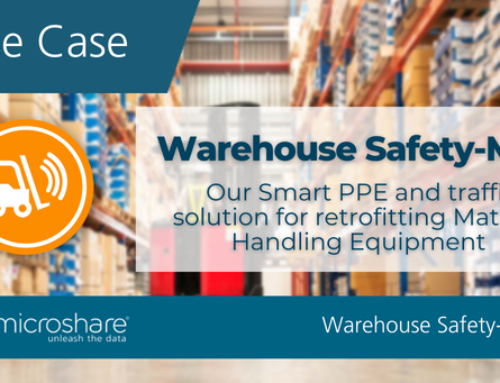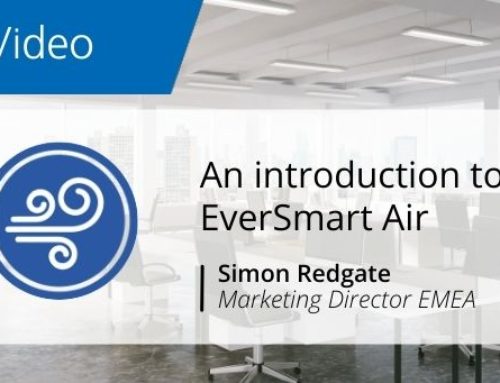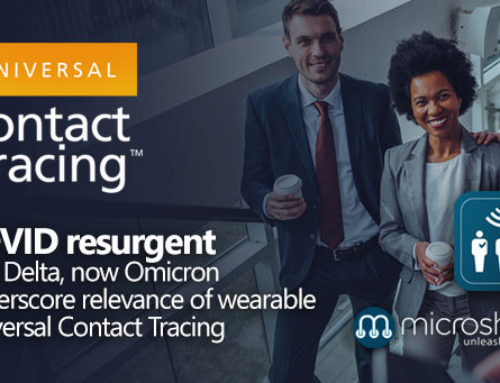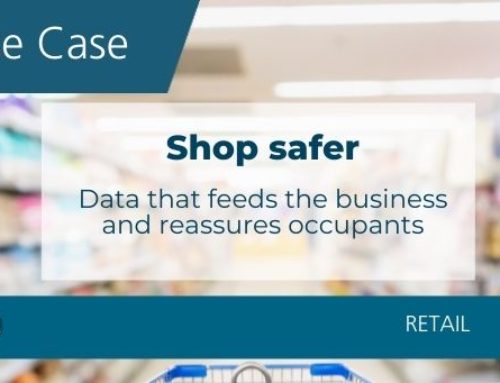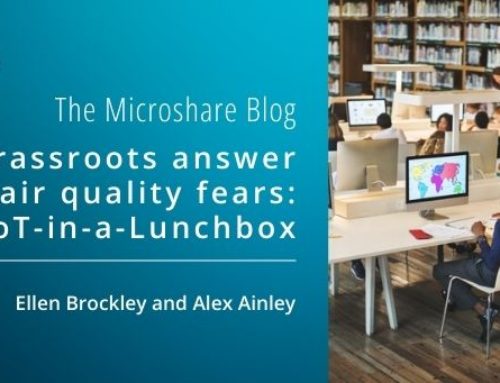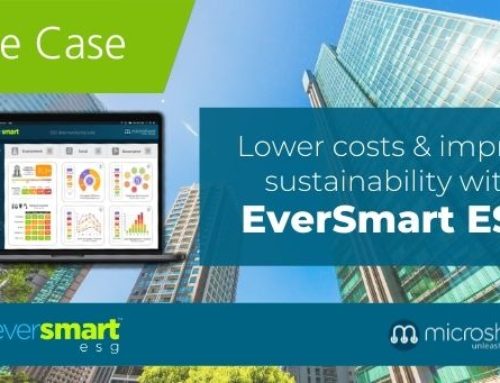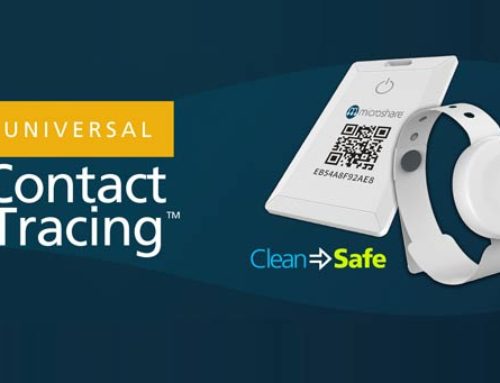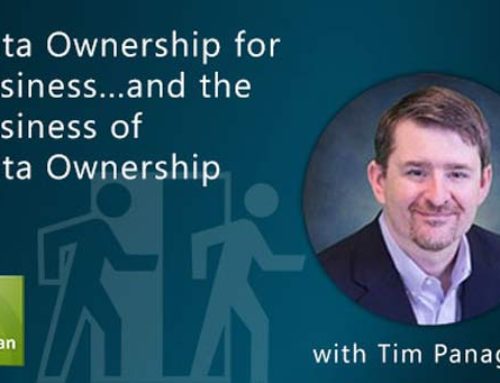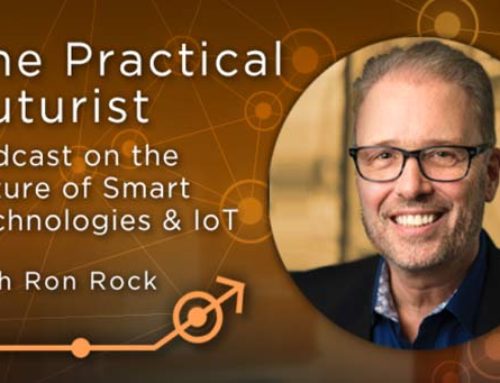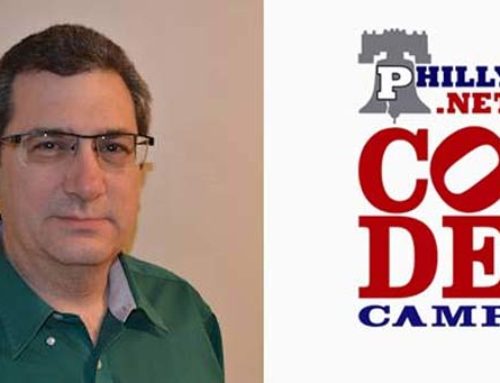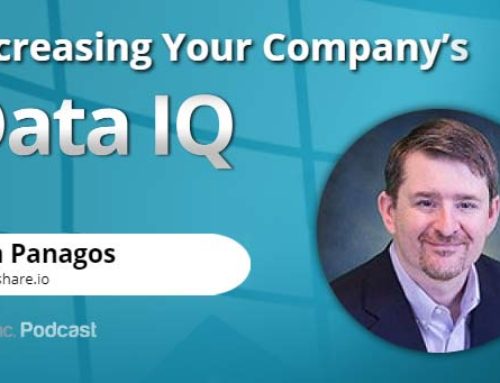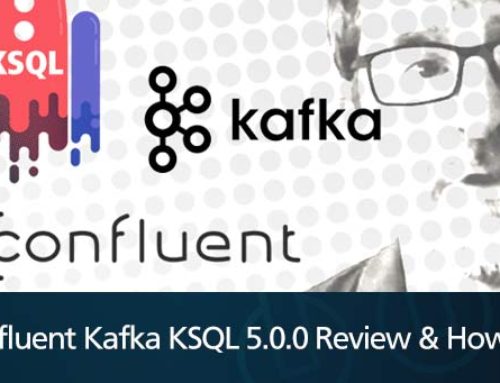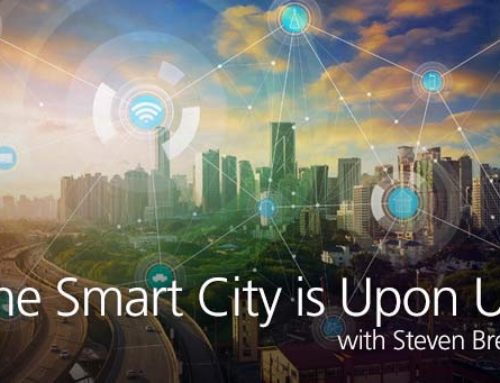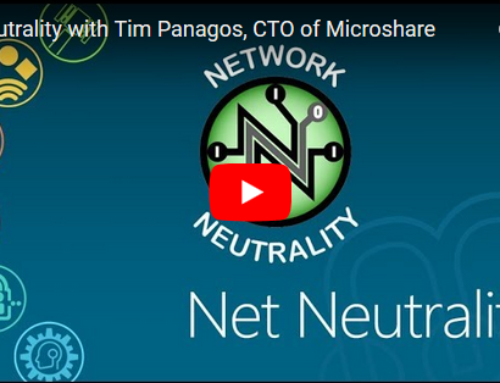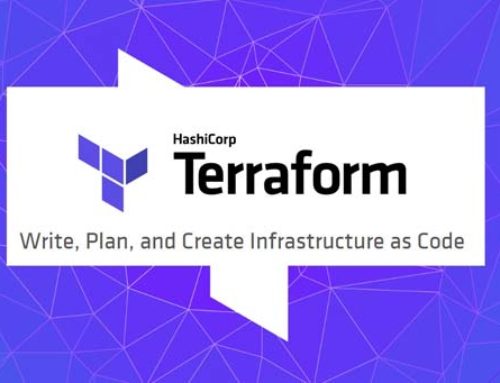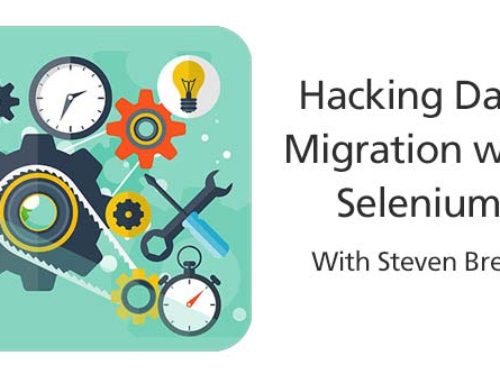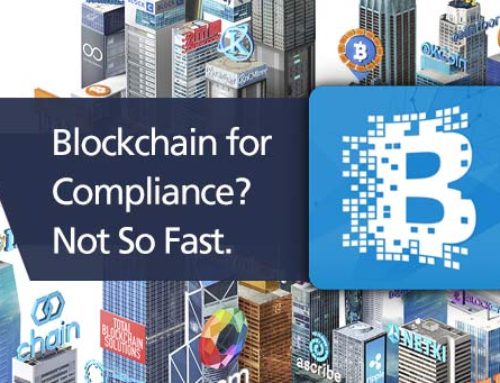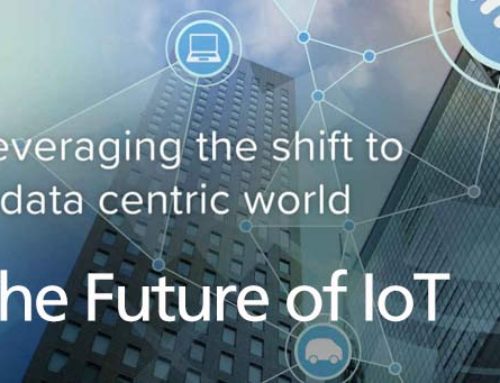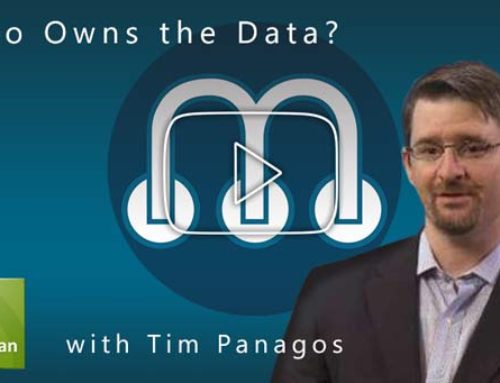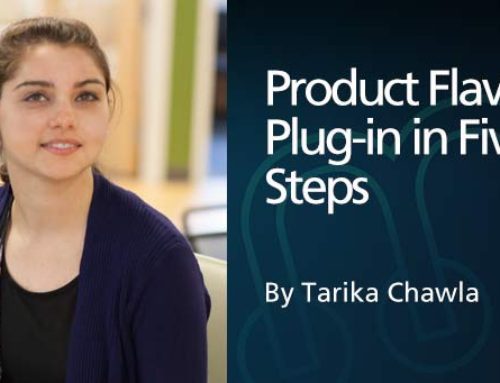THE POWER OF IOT DATA IN HOSPITAL MANAGEMENT IoT Sensors Create Vital Signs for Otherwise Inert Health Care Facilities
While the intersection of data and health care can be fraught with regulatory risk, outfitting a health care facility with anonymized IoT sensors can improve patient care, productivity and even lower the risk of infections. Microshare Co-Founder Charles Paumelle discusses this exciting innovation with the company’s Chief Sustainability Officer, Michael Moran.
Guest: Charles Paumelle | Host: Michael Moran
Transcript: THE POWER OF IOT DATA IN HOSPITAL MANAGEMENT
IoT Sensors Create Vital Signs for Otherwise Inert Health Care Facilities
Guest: Microshare Co-Founder Charles Paumelle Host: Michael Moran
While the intersection of data and health care can be fraught with regulatory risk, outfitting a health care facility with anonymized IoT sensors can improve patient care, productivity and even lower the risk of infections. Microshare Co-Founder Charles Paumelle discusses these exciting results from a pilot project with a UK hospital with the company’s Chief Sustainability Officer, Michael Moran. (Podcast Transcript).
Prefer to listen? Download the Podcast here
Michael Moran (MM) [00:00:00] Welcome to this Microshare podcast. I am joined today by our London-based co-founder, Charles Paumelle, who has been at the pointy end of the spear, so to speak, in our approach to the hospital and health care sector in Europe. And we’ve actually had some very, very interesting experiences and performance metrics drawn from a pilot project we did at a large general hospital in the U.K. I was hoping, Charles, that you could talk a little bit about both that case study, which is also on line, if you want to see it, at www.microshare.io. And perhaps you could speak also on the implications for hospitals generally, because one of the more interesting things that came out of that pilot from our partner there who manages the facility was the fact that they believe these IoT solutions actually lower infection rates. Before we get to that exciting idea, though, tell us a little about our our hospital offering and give us a sense of how we’re doing at that hospital in northern England.
Charles Paumelle (CP) [00:01:10] Sure. So it’s very good to be here. The interesting thing that we found when we started this project was that – lucky for us – there was actually a lot of commonalities between the hospital as a building and a lot of other buildings that we had more experience in. So this was absolutely our first experience in the healthcare sector. However, there were plenty of characteristics that were common to the patterns we’ve seen, in other words, towards corporate real estate or shopping centers or things like that. So the fact that they were keen on having a broad base of capabilities, which is a critical tenet of what we offer, rather than just specialized solutions for various problems.
[00:01:59] It was even better that some of the use cases we had developed, for example, the predictive cleaning toilets – or bathrooms, as you call them, in America. The occupancy solutions we were using could very easily be adapted to that environment with obviously a slightly different business purpose, if you will. But certainly, technology wise, the applicability was very, very high. And on the back of that, we then also started finding that there were a couple of capabilities that were particularly interesting for them. That was primarily in the realm of tracking and tracing assets (wheelchairs, other mobile equipment) across what is a very large space with lots of people interacting. So being able to very easily know where things are has a massive impact on the on the quality of the people’s work and the care level they can provide to the patients.
Michael Moran (MM) [00:02:56] So when we went in there, the the idea, of course, always in these implementations is to increase efficiency and identify areas where maybe labor or money is being used inefficiently and could be could be conserved or used more efficiency. But there’s also often a kind of a knock on effect when we do these deployments. One question is the sustainability side of things produces all sorts of useful data in that regard. But then surprisingly in healthcare, we had this this sense from our from our Facilities Management (FM) partner that this could actually be a boon to the health of the hospital. There was also this sense that in this day of antibiotic resistant bacteria that this could be something very important for reducing infections.
Charles Paumelle (CP) [00:03:52] That’s correct. And one of the things that actually surprised us all is that we all went in – our FM partner, cleaning contractor and ourselves – with extensive experience around things like cleaning toilets. But typically our solution, by shining new data on the utilization level of each area, you know the times of day and the variation from day to day of how each area has been utilized typically results in productivity gains. So now I know that the third floor female toilet wasn’t used at all this morning. So I don’t need to waste resources to go in and clean. That is a typical finding among our clients. In this instance, it was actually the other way round. It was actually very quickly realized by our cleaning partner that they were actually not cleaning enough, even though they were doing it as per specifications of the client. Because historically there was no data available, people always got by with averages and kind of industry best practice. But that may not be what is actually needed given the actual utilization that is happening in that space. And so shining a light on that data means being able to get this realtime feed of how much every area was utilized, getting this real time feed about user feedback and work about whether they felt that it was clean or not, whether there were some leaks on that on the floor or whatever. This instant feedback and sort of accumulated data over the first few weeks very quickly allowed them to go back to the client and say, ‘we think we’re not doing a good job. We think we need to put one or two more cleaning resources in order to get the right level of cleanliness,’ which, of course, in the hospital is all about helping stop infection spreading. It turned out that what is, you know, the usual kind of pattern where the data usually allows people to save and sort of reduce the number of resources used for cleaning, in that instance, I actually was a great way to demonstrate that more and more resources and work were required for our cleaning specifically and obviously showed the realization of that through the improved data in the weeks after the changes were made. So it started to be data driven and something as that can seem as trivial as cleanliness. It was really, really both in that context because suddenly we’re dealing with facts as opposed to kind of standards and averages. And that’s been very, very helpful to them.
Michael Moran (MM) [00:06:24] You know, Charles, when I talked to potential clients about the sustainability solutions, one of the things that always makes them perk up is that, you know, these ESG and CSR officers, these are fairly well-paid members of their staffs. They spend nearly 60 percent of their time gathering data on the performance of various metrics in a in a building or in a corporation or whatever. So most of their time is spent gathering data rather than actually analyzing and then recommending changes and doing all the work that it takes to make change happen. Similarly, in a hospital, nurses at administer and support staff by some measures spend something like 50 to 60 percent of their time looking for things like wheelchairs and various types of equipment that they need to wheel into a particular operating theater or into a room. And so we are now trying to fix that, right?
Charles Paumelle (CP) [00:07:25] That’s correct. And I was very much the the second problem we really helped them tackle was to find a cost effective, scalable solution. I mean, a hospital or a general hospital like this has nearly a thousand beds. It’s on a very large scale. It has multiple entrance and exit points all over the place. Very different sort of aged buildings that don’t really have the same technology and ability to be retrofitted. So the fact that technology could just seamlessly cover the entire hospital with a very small amount of network equipment. To give you an idea, this is this hospital. When they implemented the Wi-Fi a couple of years ago, they had to put one hundred thirty Wi-Fi access points. One hundred thirty. We came in with our technology resources long range and then much better penetration. But to cover the entire hospital, we only used eight of our indoor network gateways. So we were able to very quickly get the entire hospital connected with this technology. And then on the back of that start to things like trackers on the wheelchairs starting to have obviously fixed points that detect those wheelchairs passing by so that we have a very good idea in real time where things are and kind of relieve some of our stress and then kind of start saving that time for the caring staff as well as for the public users. You can imagine there’s a there’s a lot of stress when you have to bring in an elderly relative or your wife who is s just about to give birth. And the last thing you want to do when you were walking to the hospital was just trying to figure out, well, where on Earth can I find a wheelchair? This kind of improves patient experience as well as the makes the staff more productive. So that was certainly a very, very good move.
Michael Moran (MM) [00:09:25] Well, let’s talk about some narrower but equally important things that we discovered there. I mean, one of one of them had to do with Legionella, or I should say with prevention of Legionella, which in the US we would call Legionnaire’s Disease, which obviously can be a terrible development in any building. But also the whole concept of monitoring refrigerators for temperature and you know, so many things in a hospital require very specific temperatures to remain effective. So could you talk us through that a bit?
Charles Paumelle (CP) [00:10:00] Yeah, and that’s another great case of what we are doing is completely night and day to what has been the norm so far? So when you look at legislation, whether it is about medicine fridges that are in a hospital or are it obviously the water supply that’s available. The legislation is pretty much suggesting that you have to monitor these things on a regular basis. For a fridge typically, you have to at least once a day check that the temperature is right where you’re storing this very expensive medicine. And for Legionella or Legionaires Disease prevention, you’re supposed to monitor once a month that the temperature is correct and that the water is flowing and so forth. And we’re moving from these kind of once a day or once a month kind of checks, which are manual, which are very random and kind of very human centric to monitoring 24/7, knowing exactly the conditions in which the medicine is stored and being able to immediately alert someone if we see that a condition such as a rise in temperature because maybe someone unplug the fridge by mistake could endanger the quality of those medicines. So suddenly you’re moving from that mistake maybe being noticed nearly a day late, and by then, everything that was in that fridge needs to be put in the bin to actually now knowing straight away that that’s the problem and someone could intervene and fix the problem straightaway. And for the water is the same thing. We’re moving from this kind of once a month random check to basically knowing exactly in real time when, if and when the hot water is at the right temperature. And again, being able to send someone straight away to to fix the issue rather than potentially have run the risk of affecting people and creating more illnesses in that environment. Because we know exactly, we’re actually monitoring every 30 seconds that instance the that the temperature of every access point for for the water.
Michael Moran (MM) [00:12:02] You know, our CEO, Ron Rock recently wrote a blog post on the power of data in a hospital to really transform the way that a hospital operator thinks about the building. I mean, it’s not just a place where doctors and nurses cure parent patients who are brought in. It’s also potentially a place that could incubate problems. And that’s that’s become an issue across the hospital industry to keep people well who come in, because after all, people come in to visit their relative and they may actually introduce something bad to the to the environment. So, “Hospital Heal Thyself” is runs a blog post. I hope people will go and take a look at that.
[00:12:53] I wanted to wrap up, Charles, with a quick reminder that, you know, when you note when you describe the quick and fairly simple insulation of the network that connected ] these sensors in the hospital, that immediately makes the back of the hair stand up on some I.T. professionals and the security teams. But these are completely disconnected, in other words, they are quarrantined to use a hospital term from the actual corporate network right there. So it provides no gateway for somebody, some evil doer, to come in and hack into the hospital system.
Charles Paumelle (CP) [00:13:32] That’s correct. All of the solutions that we deploy are standalone and in that respect. And they never we never have to ask the hospital or any form of building manager to ask their I.T. to open up any holes in that in their own security. So that’s another another big benefit. And we tend to also work very often with larger networks as our backbone. So, again, that they benefit from the long range that these things have. So actually, in that same area of England, we deployed some of the sensors in the building where we provided the infrastructure. But because it was actually connected to a larger national network run by the incumbent telecom carrier, and some of the devices were able to be very regularly seen by a network antenna, which was about 13 kilometers away. And that gave them that extra assurance that even if something happened within the building itself, the devices would potentially still get their reading through because there’s a as a backup plan, if you will, with this kind of national network that’s that’s picking up when the local one is not on is currently unavailable or something like that. So that’s another kind of elements. So, yes, it’s completely separate from the corporate I.T. So you’re not risking opening a backdoor to malicious activity that you’re also actually benefiting from the potential wider network that’s available for that technology. And that gives you that extra confidence that things are just gonna keep working.
[00:15:04] The other thing that was really important for the client is that every single thing that we deployed was battery based. So there was then never a need to ask for approval to go in and install cabling and electrical appliances. Everything that we do was, we call it, “Lick, Stick and Scan.” So you open the box, you take the sensor, put it a bit of double sided tape on it and stick it on the wall. You scan it and then the next day you have meaningful data. All of this just happened and there’s a lot of complexity that’s gone into making that happen. But we’ve kind of, you know, taking large steps to completely removing the clients from the complexity and making it really easy to deploy these things. Because at the end of day, the way that IoT becomes successful is when known specialists like a facilities manager, like a building manager, are able to open that box, put it on their wall and get meaningful information for their business. It’s not about teaching them what is the innards of how the technology works. And that’s been another, I think, very interesting learning along our path. It’s kind of simplify, simplify, simplify. And I think we’ve got ourselves in a good position over the last few months because of that.
Michael Moran (MM) [00:16:15] Well, Charles, thank you very much. I wanted to make sure that we we really highlighted this this effort we’ve made in turning an inert hospital into a living, breathing entity in the U.K. The operator, that hospital who of course, requested anonymity, we can’t really reveal them. But they were very pleased with the surprise data that they got. Not just what we had promised in terms of efficiencies and cost savings, but the great surprise in productivity and potentially reducing infections in such a sensitive area. So, again, thanks for joining Charles. And we will be back with more Microshare podcasts very soon.
Charles Paumelle (CP) [00:16:57] Thank you, Michael.




